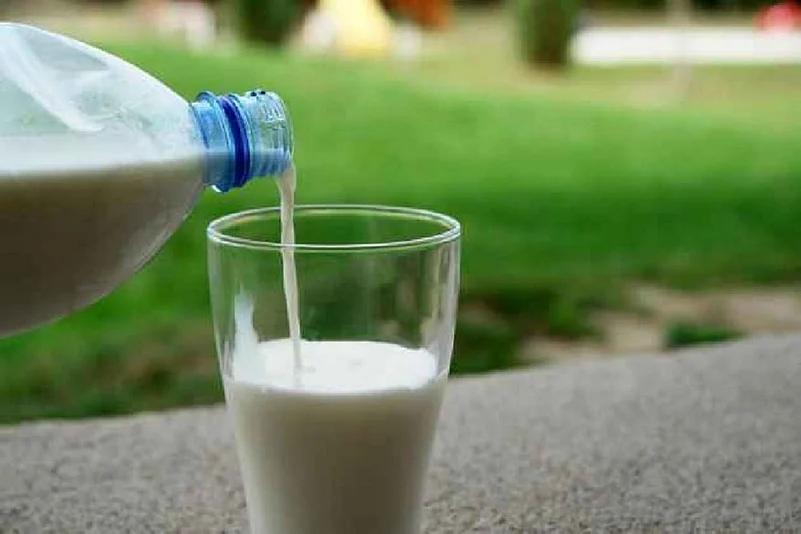CPI inflation surged to 7.44 per cent in July led by a strong uptick vegetable prices in the country. While the pressure on CPI inflation continues, the prices of dairy products are being closely watched. When retail inflation declined from 7.79 per cent in April last year to 4.25 per cent in May 2023, dairy inflation followed the opposite direction.
According to the official data, the milk and products inflation rate stood at 5.78 per cent in July last year. Since then, the prices of dairy products have seen a strong rise with the inflation rate touching a high of 9.65 per cent in February this year. The inflation rate of milk and products stood at 8.34 per cent in July.
Between April and July, the rate has been stable in the 8-9 per cent range. When CPI inflation surged from 4.25 per cent in May to 7.74 per cent in July, dairy inflation slightly declined from 8.85 per cent in May to 8.34 per cent in July. Owing to several supply chain-related factors, prices of dairy products have been elevated for some time now.
Inflation Pressure On Dairy Products
Talking about the elevated prices of dairy products in the financial year 2023, Sheetal Sharad, Vice President at ICRA Ltd, said, “Domestic raw milk availability was impacted in FY2023 owing to the incidence of lumpy skin disease and erratic weather affecting milk productivity, particularly in northern and western states of the country. Apart from this, fodder and feed prices for the dairy farmer were high.” The annual rate of fodder inflation rose from 7.14 per cent in January 2022 to 29.30 per cent in January 2023. This directly affected milk prices, according to analysts.
Due to the supply issues, dairy companies had to pay more for procurement which led to a hike in retail prices. According to market analytics firm CRISIL’s data, cumulative price hikes by dairy companies stood at Rs 5-7 per litre in the last fiscal. The firm said in its report that along with fodder prices, disruption in the artificial insemination schedule also played a role in supply chain disruptions.
However, analysts say that the supply chain issues have moderated which would lead to fewer milk price hikes in this financial year. Anand Kulkarni, director at CRISIL Ratings, said in a statement, “Milk price hikes will be much less intense this fiscal at around Rs 2 per litre compared with a cumulative Rs 5-7 per litre last fiscal, primarily because of two reasons— improvement in raw milk supply on better availability of fodder, and timely vaccination and artificial insemination of cattle.”
Commenting on the raw milk prices in this fiscal, Sharad said, “We expect raw milk prices to gradually cool down with improvement in milk supply in flush season in the southern states. We expect flush season in the north to also lead to similar trends, thereby cooling off raw milk prices.”
However, experts on the subject strike a cautious note on whether the improving supply would lead to substantial cooling of dairy inflation in the coming months.
Concerns Remain
Suman Chowdhury, chief economist and head of research at Acuite Ratings, said that the supply chain issues have not entirely gone away. “There are still concerns due to the erratic monsoon pattern and high prices of fodder.” He opined that dairy inflation could remain in the 7-8 per cent range and also increase from the current levels if companies hike milk prices.
According to data compiled by CareEdge ratings, the average WPI inflation in fodder prices was 21 per cent in the last financial year. While the average has cooled down substantially, it remained in the double-digit territory at 10 per cent between April and July in FY24. In addition to this, the erratic pattern of monsoon had led to excess rainfalls in some states like Punjab, Rajasthan and Gujarat till the end of last month while Jharkhand, West Bengal and Bihar were among the states which saw deficit rainfall.
Shambhavi Priya, associate economist at CareEdge Ratings, said that supply-demand mismatch and high input prices are still putting pressure on dairy inflation. She added, “Some moderation can be seen Q3 onwards with the expectation of an increase in production of milk. Usually, the period between October to March is referred to as flush season for milk when there is an increase in milk production naturally. However, an unfavourable monsoon could play a spoilsport by impacting the production of cattle feed crops and keeping the input prices elevated.”
While the input prices remain high, they have cooled down in this financial year. However, experts aren’t sure whether the dairy companies would pass on the benefits to consumers. Sharad said that the possibility of substantial price cuts remains limited at the moment. With the uncertainty over monsoon and elevated prices of fodder, it remains to be seen how the improvement in the supply of raw milk affects the prices of dairy products in the coming months.































